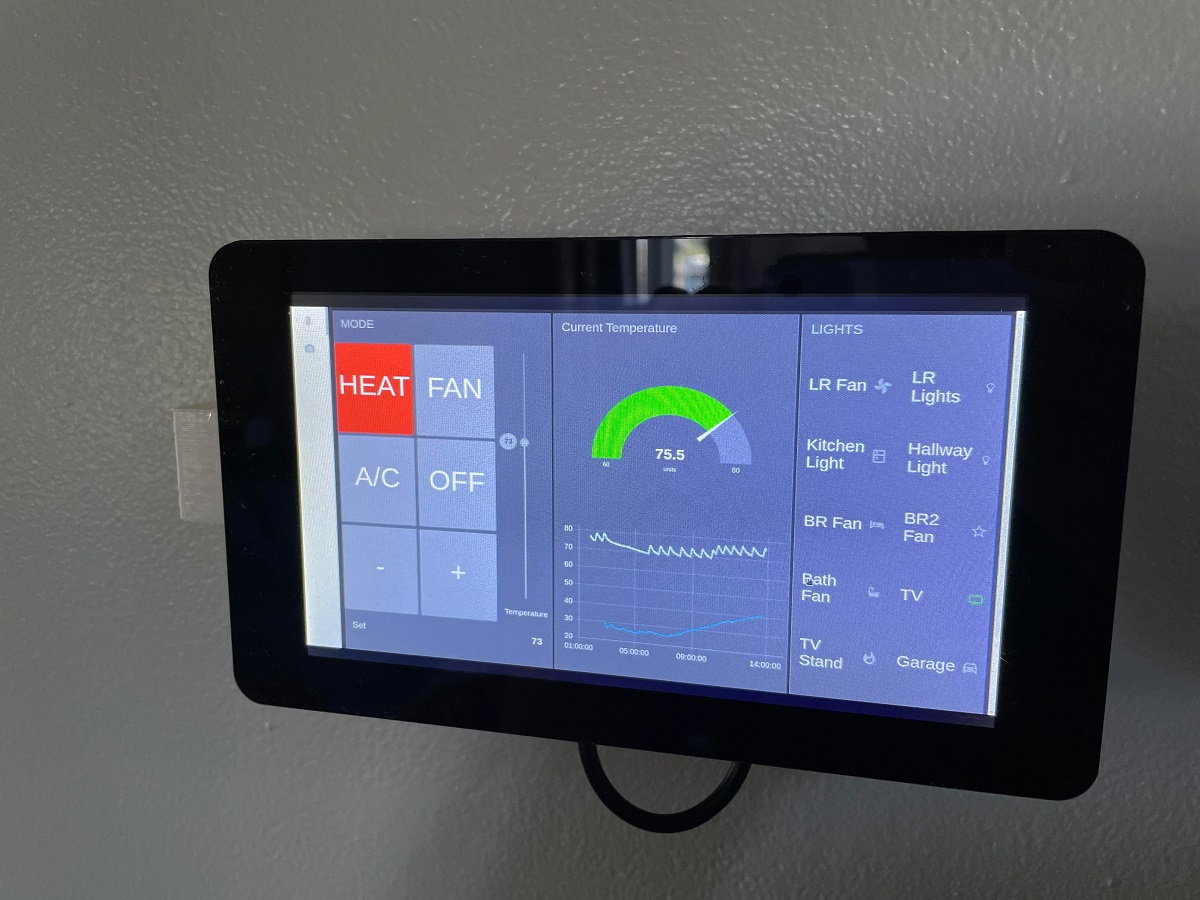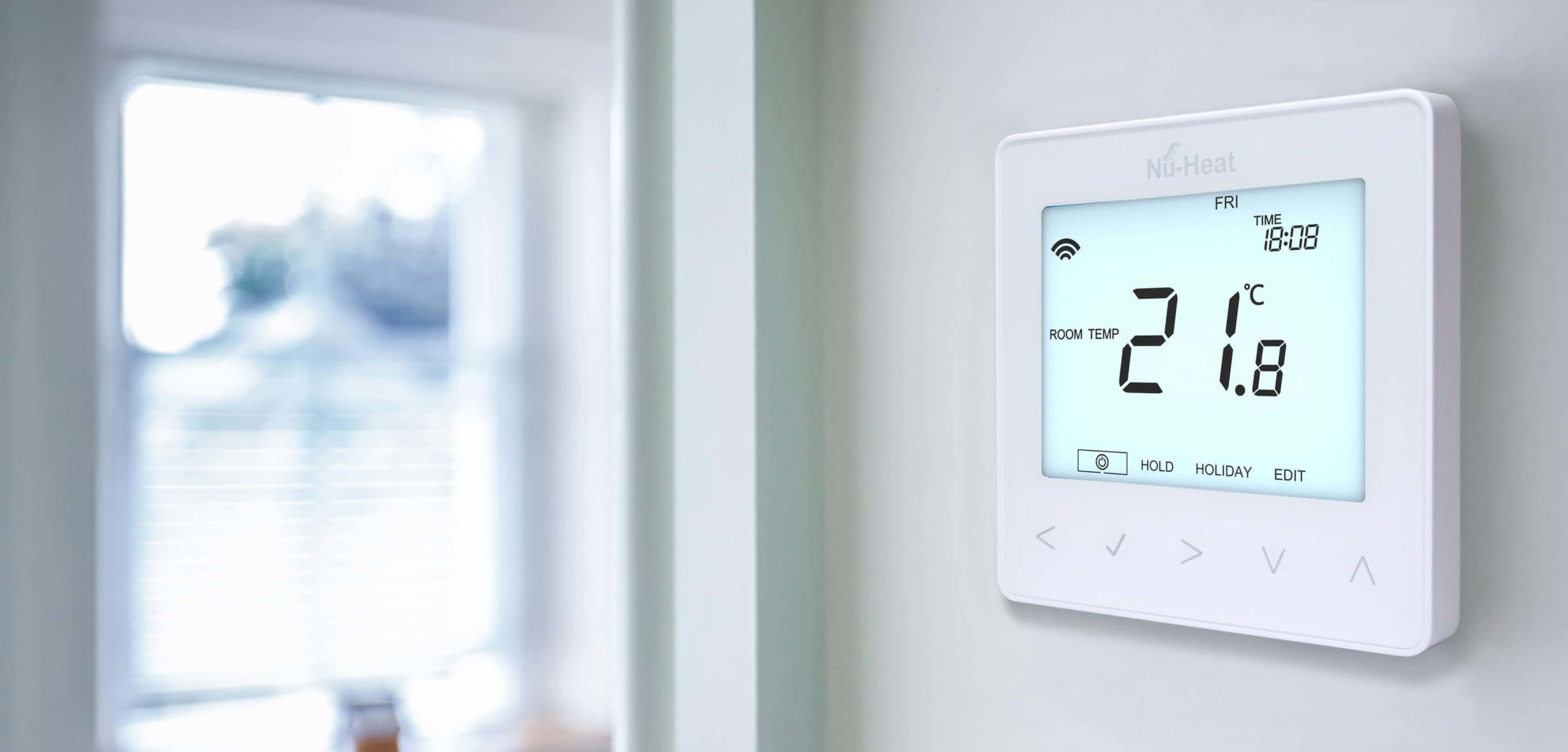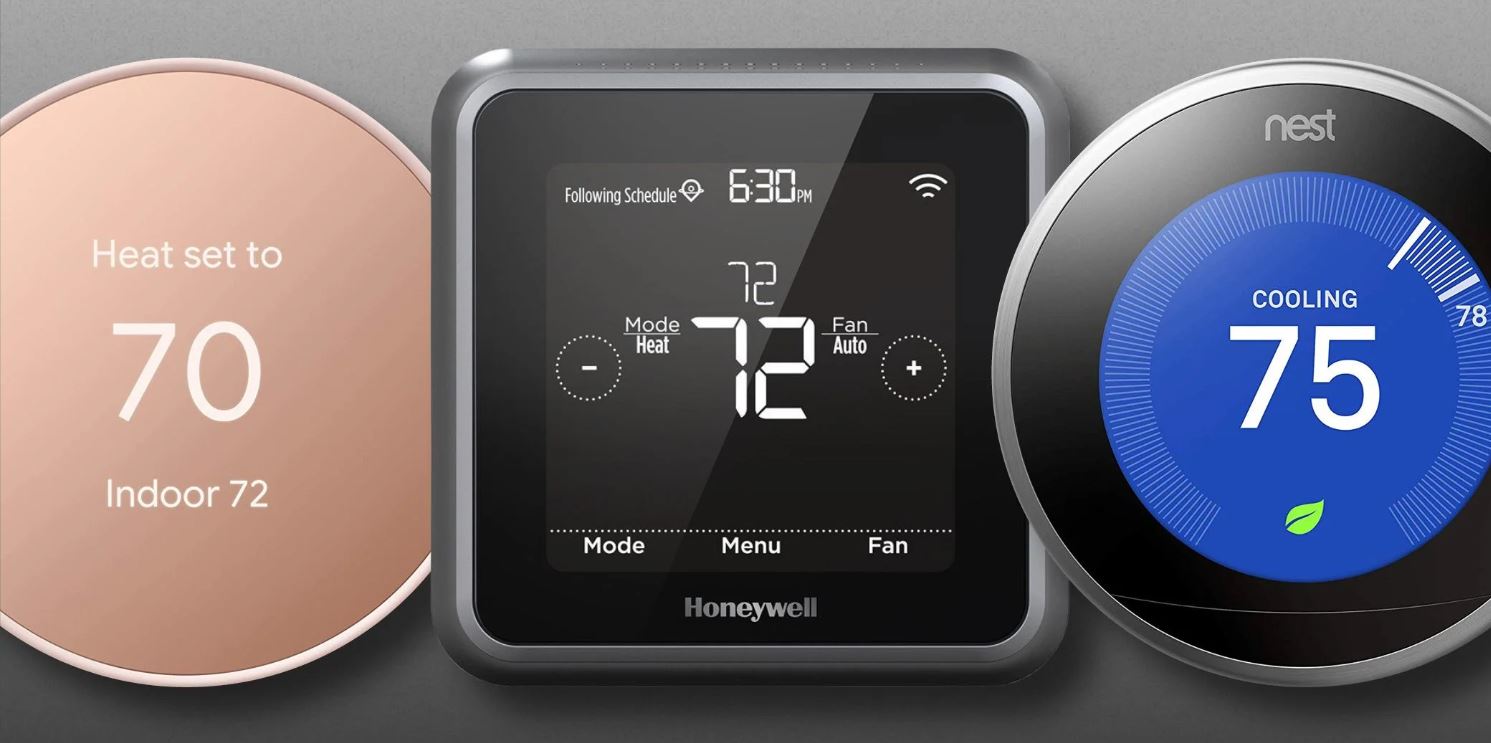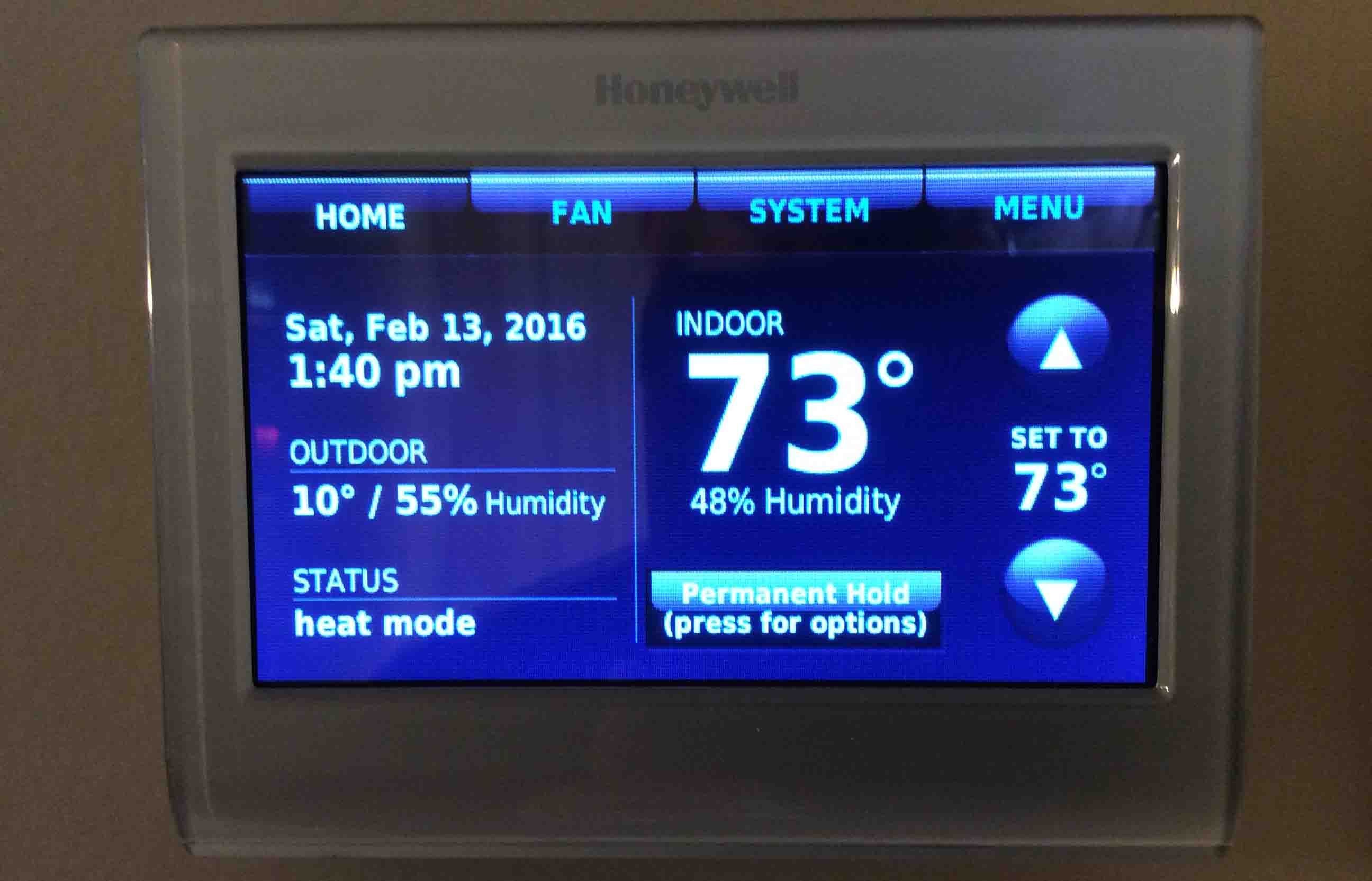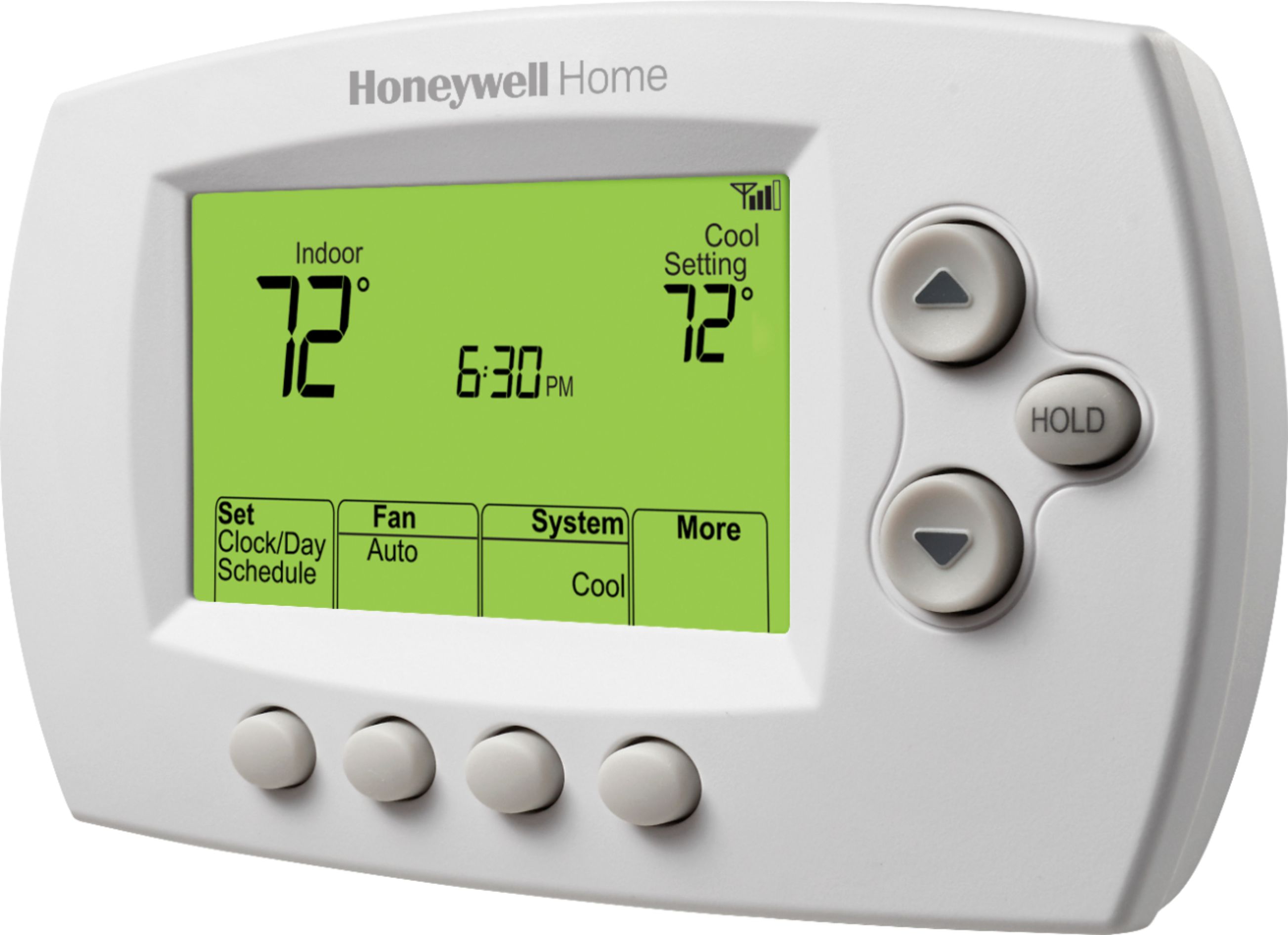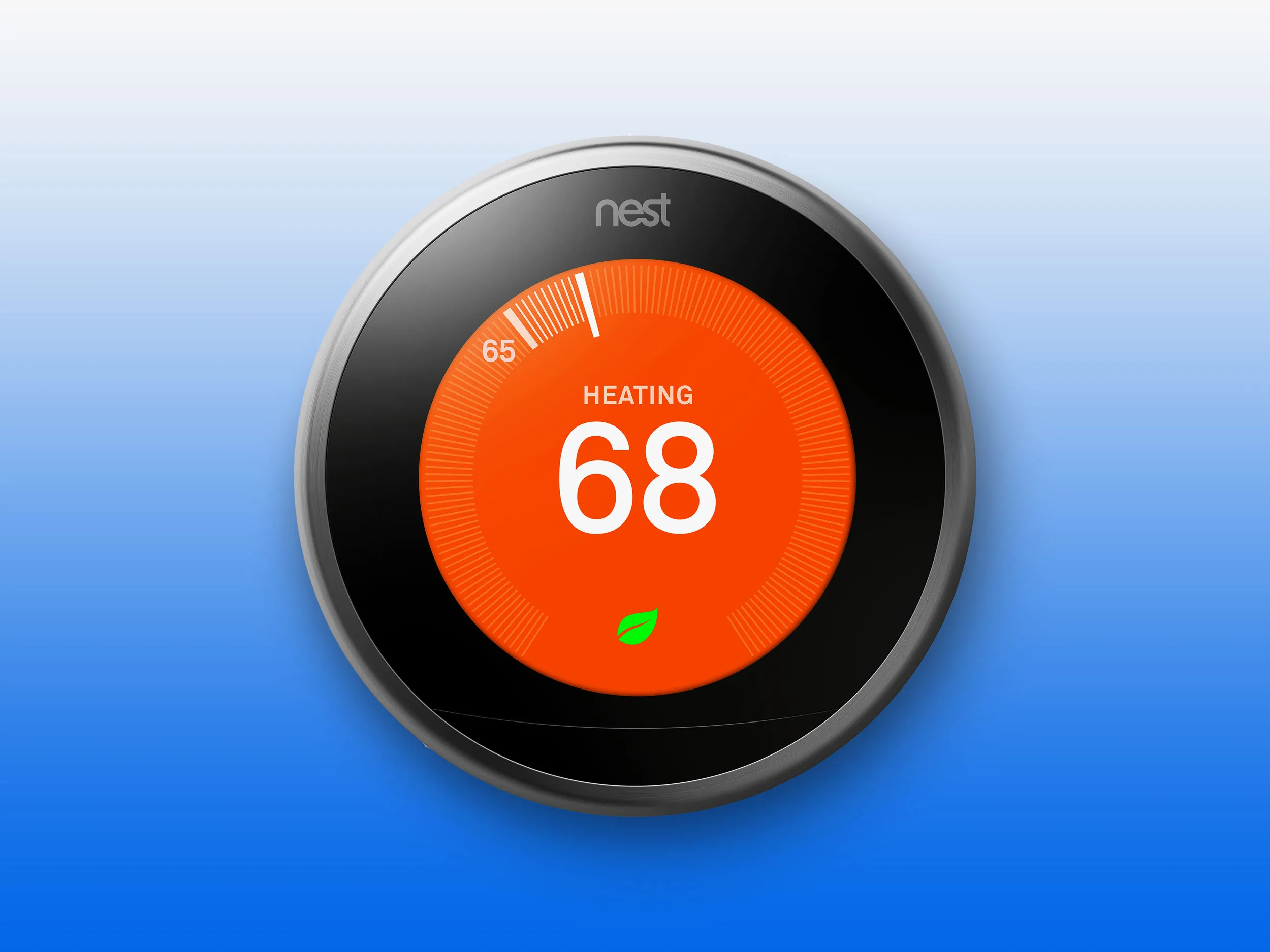Introduction
A dedicated electronic device, such as a smart thermostat, is specifically designed to perform a single function or set of functions. Unlike general-purpose devices like smartphones or computers, dedicated electronic devices focus on providing specialized functionality with optimized performance, power consumption, and user interfaces. An essential component of these devices is the operating system (OS) that runs them.
The operating system serves as the foundation for managing hardware resources, running applications, and providing a user interface. It plays a crucial role in ensuring the smooth and efficient operation of the dedicated electronic device. The type of operating system chosen for a specific device depends on factors such as performance requirements, power consumption, security, and user interface capabilities.
In this article, we will explore the types of operating systems commonly used in dedicated electronic devices, with a focus on smart thermostats. We will delve into the factors that influence the choice of operating system for these devices to ensure optimal performance and functionality.
Whether you are a gadget enthusiast, technology professional, or simply curious about the inner workings of smart thermostats, this article will give you valuable insights into the role of operating systems in these dedicated electronic devices.
What is a Dedicated Electronic Device?
A dedicated electronic device is a specialized piece of hardware designed to perform specific tasks or functions without the versatility of a general-purpose device. Unlike smartphones or computers, dedicated electronic devices are purpose-built to provide focused functionality in a wide range of industries and applications.
These devices are typically optimized for performance, power consumption, and reliability to ensure efficient operation over an extended period. Examples of dedicated electronic devices include smart thermostats, fitness trackers, industrial control systems, medical devices, and automotive systems.
One of the key characteristics of dedicated electronic devices is their limited scope. They are designed to excel at a specific task or set of tasks, which allows for streamlined operation and enhanced efficiency. This is in contrast to general-purpose devices that offer a broader range of functions but may not excel in any particular area.
Dedicated devices often incorporate advanced technologies, such as sensors, actuators, connectivity options, and intuitive user interfaces, to provide seamless user experiences. These devices are becoming increasingly prevalent in our daily lives, offering convenience, automation, and improved efficiency.
Smart thermostats, for example, are dedicated electronic devices designed to regulate and control heating and cooling systems in homes or commercial buildings. They provide features such as temperature scheduling, remote access, energy usage monitoring, and even integration with voice assistants, offering increased comfort and energy savings for users.
The streamlined nature of dedicated electronic devices allows for better performance optimization, improved power efficiency, and enhanced reliability in specific applications. As a result, they have gained popularity and become an integral part of various industries, including home automation, healthcare, automotive, and industrial automation.
In the next section, we will delve into the importance of the operating system in these devices and how it enables their functionality and performance.
Importance of an Operating System in Dedicated Electronic Devices
The operating system (OS) is a critical component of dedicated electronic devices as it provides the necessary framework for managing hardware resources, running applications, and providing a user interface. It plays a crucial role in facilitating communication between software and hardware components, ensuring optimal performance and functionality.
One of the primary functions of the operating system in dedicated electronic devices is to abstract the underlying hardware complexities and provide a standardized interface for software developers. This abstraction layer allows developers to focus on building applications without having to worry about the specifics of the hardware platform. Consequently, it enhances the portability and compatibility of software across different devices.
The operating system also manages the allocation and utilization of hardware resources such as memory, CPU, storage, and peripherals. It ensures that multiple applications running on the device can coexist and interact without interfering with one another. By efficiently scheduling tasks, managing memory, and controlling device resources, the operating system optimizes performance and prevents system crashes or slowdowns.
In addition to resource management, the operating system provides the user interface through which users interact with the device. Whether it is a touchscreen, buttons, or voice commands, the operating system translates user inputs into commands and coordinates the corresponding actions. The user interface also allows users to configure settings, view information, and perform tasks efficiently and intuitively.
Furthermore, the operating system facilitates connectivity in dedicated electronic devices, enabling seamless integration with other devices, networks, or services. Whether it’s connecting a smart thermostat to a home automation system or a fitness tracker to a smartphone, the operating system manages the communication protocols, data transfer, and synchronization to ensure a smooth user experience.
Another crucial aspect of the operating system is its ability to provide security and privacy features. As dedicated electronic devices become more interconnected and handle sensitive data, it is essential to have robust security measures in place. The operating system implements security mechanisms such as encryption, authentication, and access control to protect user data and prevent unauthorized access or breaches.
In summary, the operating system is a vital component of dedicated electronic devices as it facilitates software-hardware communication, optimizes performance, manages resources, provides a user interface, enables connectivity, and ensures security. The choice of operating system for a specific device depends on several factors, which we will explore in the next section.
Types of Operating Systems for Dedicated Electronic Devices
When it comes to dedicated electronic devices, there are several types of operating systems (OS) that can be used depending on the specific requirements and constraints of the device. Each type of operating system offers different features and capabilities to cater to the unique needs of the device and its intended purpose. Let’s explore the three main types of operating systems commonly used in dedicated electronic devices:
1. Real-Time Operating System (RTOS): RTOS is designed to provide precise and predictable timing behavior, making it suitable for devices that require real-time and deterministic responses. This is particularly important in applications where tasks must be executed within strict time constraints, such as in industrial automation, medical devices, or automotive systems. RTOS ensures that critical tasks receive priority and are executed without delays, guaranteeing reliable performance.
2. Embedded Operating System: Embedded operating systems are lightweight and optimized for resource-constrained devices with limited processing power, memory, and storage. These operating systems are specifically designed to be integrated into the device’s firmware and provide essential functionalities required for its operation. They are commonly used in devices such as smart thermostats, fitness trackers, and consumer electronics. Embedded operating systems offer a balance between performance, resource utilization, and energy efficiency.
3. General-Purpose Operating System (GPOS): GPOS, such as Linux, Windows, or macOS, are fully-featured operating systems designed for general-purpose computing devices like smartphones and computers. While GPOS can be employed in some dedicated electronic devices, they are generally more resource-intensive and may not be suitable for devices with strict performance or power constraints. However, GPOS offers a wide range of features and extensive software support, making it a viable option for devices that require advanced functionality and flexibility.
It’s worth noting that some dedicated electronic devices may employ a combination of operating systems, known as a hybrid approach. In this scenario, an embedded operating system may handle critical real-time tasks, while a general-purpose operating system provides additional functionalities or user interfaces. This hybrid approach allows for a balance between real-time responsiveness and advanced features.
The choice of operating system for a dedicated electronic device depends on various factors, including performance requirements, power consumption, security, and integration capabilities. Each type of operating system offers its own set of advantages and trade-offs, and it’s essential to select the appropriate one that aligns with the specific needs of the device and its intended application.
In the next section, we will discuss the factors that influence the choice of operating system for smart thermostats, one of the most popular dedicated electronic devices today.
Real-Time Operating System (RTOS)
A real-time operating system (RTOS) is a type of operating system specifically designed to provide precise and deterministic timing behavior. It is well-suited for dedicated electronic devices that require real-time and predictable responses to external events or inputs. RTOS ensures that critical tasks are executed within strict time constraints, maintaining reliable performance for time-sensitive applications.
The key characteristic of an RTOS is its ability to prioritize and schedule tasks based on their urgency and deadlines. Real-time tasks are assigned priority levels and are executed accordingly, ensuring that critical operations are not delayed or interrupted by lower-priority tasks.
RTOS provides deterministic timing behavior through mechanisms such as preemption and interrupt handling. Preemption allows a higher-priority task to interrupt a lower-priority task, ensuring that time-critical operations are immediately addressed. Interrupt handling enables the system to respond promptly to external events, such as sensor inputs or communication signals, without any significant delays.
This type of operating system is commonly used in applications that require precise control and timing, such as industrial automation, medical devices, aerospace, and automotive systems. These domains often involve processes that demand time-critical responses to ensure safety, accuracy, and efficiency.
RTOS also offers features like task management, inter-task communication, and synchronization mechanisms. These features enable efficient coordination between different tasks and facilitate communication between software components in the system.
One notable advantage of an RTOS is its ability to handle both hard real-time and soft real-time requirements. Hard real-time tasks have strict timing deadlines, and a failure to meet these deadlines could result in catastrophic consequences. Soft real-time tasks, on the other hand, have timing requirements that may have some flexibility in meeting the deadlines.
It’s important to note that using an RTOS comes with certain trade-offs. RTOS typically requires more memory and processing power compared to other types of operating systems. Additionally, the complex scheduling algorithms and interrupt handling mechanisms may add complexity to the system design and development process.
However, the benefits of an RTOS, such as deterministic timing behavior and efficient task management, often outweigh these trade-offs in applications where real-time responsiveness is critical.
In the next section, we will explore another type of operating system commonly used in dedicated electronic devices: embedded operating systems.
Embedded Operating System
An embedded operating system is specifically designed for dedicated electronic devices with limited resources, such as processing power, memory, and storage. This type of operating system is optimized to provide essential functionalities required for the device’s operation while consuming minimal resources.
Embedded operating systems are lightweight and compact, allowing them to be integrated into the device’s firmware or hardware. They are designed to efficiently run on resource-constrained devices, such as smart thermostats, fitness trackers, and consumer electronics.
One of the primary advantages of embedded operating systems is their small footprint, which enables them to efficiently utilize the limited resources available in the device. This optimization allows for improved performance, reduced power consumption, and efficient memory usage.
Embedded operating systems typically offer a set of core features necessary for the device’s primary functions. These features may include task scheduling, memory management, device drivers, communication protocols, and file systems. By providing these essential functionalities, the embedded operating system ensures the smooth operation and reliable performance of the dedicated electronic device.
Another key feature of embedded operating systems is their ability to boot quickly and have rapid startup times. Devices that require instant-on capabilities, such as home automation systems or industrial control systems, can benefit from the fast startup provided by embedded operating systems.
Furthermore, embedded operating systems often provide specific tools and frameworks for application development. These development tools make it easier for developers to create software for the dedicated electronic device, enabling faster development cycles and time-to-market.
Embedded operating systems are also known for their real-time capabilities. While they may not offer the same level of determinism as real-time operating systems (RTOS), they can provide sufficient responsiveness for many time-sensitive applications. This makes them suitable for devices that require near-real-time interactions or data processing.
However, it’s important to note that the use of embedded operating systems may come with limitations. These systems are typically less flexible and may not support the extensive software libraries and applications available for general-purpose operating systems. Additionally, their limited capabilities may restrict their use in devices that require advanced functionality or complex user interfaces.
Overall, embedded operating systems strike a balance between resource optimization, performance efficiency, and functionality required by dedicated electronic devices. Their lightweight nature and tailored features make them a suitable choice for devices where resource constraints and real-time responsiveness are crucial.
In the next section, we will discuss another type of operating system commonly used in dedicated electronic devices: general-purpose operating systems.
General-Purpose Operating System (GPOS)
A general-purpose operating system (GPOS) is a fully-featured operating system designed for a wide range of computing devices, including smartphones, computers, and servers. While GPOS is not specifically designed for dedicated electronic devices, it can be utilized in certain scenarios where advanced functionality and flexibility are required.
GPOS, such as Linux, Windows, or macOS, offer a comprehensive set of features and robust software support. They provide a wide range of capabilities, including multitasking, memory management, device drivers, networking, file systems, and extensive software libraries. This makes GPOS suitable for devices that require complex applications and interactions.
One of the main advantages of using a GPOS in dedicated electronic devices is the extensive software ecosystem available. Developers can leverage the wide array of existing software, libraries, and frameworks to build applications more efficiently. This not only reduces development time but also allows for the integration of advanced functionalities and features without reinventing the wheel.
GPOS also benefit from regular updates and improvements by the operating system vendors. These updates often include security patches, bug fixes, and performance optimizations, ensuring that the device remains secure and up-to-date with the latest advancements in technology.
Furthermore, GPOS usually offer a rich user interface, providing a familiar and intuitive experience for users. Graphic user interfaces (GUIs), touchscreens, and sophisticated interaction capabilities allow users to navigate and interact with the device seamlessly.
However, there are trade-offs when using a GPOS in dedicated electronic devices. The most significant challenge is resource utilization, as GPOS tend to consume more memory, processing power, and storage compared to RTOS or embedded operating systems. This can be a drawback for devices with strict resource constraints or limited battery life.
Another consideration is that GPOS may not provide the same level of real-time responsiveness required in time-critical applications. Tasks scheduling, interrupt handling, and other real-time features may not be as efficient as in RTOS or embedded operating systems.
Despite these challenges, GPOS can still be viable options for certain dedicated electronic devices that require advanced functionality, extensive software support, and a rich user interface. It’s essential to carefully evaluate the device’s specific requirements and consider the trade-offs associated with using a GPOS.
In the next section, we will discuss the factors that influence the choice of operating system for smart thermostats, one of the most ubiquitous dedicated electronic devices today.
Factors Affecting the Choice of Operating System for Smart Thermostats
The choice of operating system (OS) for a smart thermostat, as with any dedicated electronic device, depends on several factors that influence the device’s performance, functionality, security, and user experience. Let’s explore some key factors that affect the selection of an operating system for smart thermostats:
1. Performance Requirements:
The operating system chosen for a smart thermostat must be able to handle the device’s performance requirements efficiently. This includes fast response times, smooth user interface interactions, and reliable performance in handling temperature control algorithms, scheduling, and data processing.
2. Power Consumption:
Smart thermostats are typically powered by batteries or low-power sources, requiring the operating system to be optimized for minimal power consumption. The OS should implement power-saving techniques, such as low-power modes, dynamic voltage scaling, and efficient task scheduling, to maximize battery life and minimize energy usage.
3. Security and Privacy:
As smart thermostats become more interconnected and handle sensitive user data, choosing an operating system with robust security features is crucial. The OS should provide mechanisms for data encryption, secure communication protocols, and user authentication to protect against security breaches and ensure user privacy.
4. User Interface and Integration Capabilities:
The operating system should support intuitive and user-friendly interfaces for smart thermostats, allowing users to easily set and adjust temperature schedules, access energy reports, and control the device. Additionally, the OS should have integration capabilities to connect with other smart devices, home automation systems, or cloud services for enhanced functionality and interoperability.
5. Development Tools and Support:
The availability of development tools, documentation, and community support for the chosen operating system is essential for smooth and efficient development of smart thermostat applications. This can include software development kits (SDKs), APIs, forums, and libraries that enable developers to create and maintain applications for the device.
6. Cost and Licensing:
The cost and licensing terms associated with the operating system can also influence the decision. Some operating systems may require licensing fees or have specific usage restrictions, which need to be considered in terms of budget and long-term financial viability for the smart thermostat manufacturer.
It’s important for smart thermostat manufacturers to carefully evaluate these factors and prioritize the requirements specific to their device and target market. There may be a trade-off between performance, power consumption, security, user experience, and development costs that needs to be considered before selecting the most suitable operating system for the smart thermostat.
In the next section, we’ll wrap up the article by summarizing the key points discussed and emphasizing the significance of choosing the right operating system for dedicated electronic devices like smart thermostats.
Performance Requirements
The performance requirements of a smart thermostat play a crucial role in determining the choice of the operating system (OS) for the device. A smart thermostat needs to efficiently and effectively perform its primary function of temperature regulation and control, while also providing a seamless user experience. Therefore, the selected OS should be capable of meeting these performance requirements.
One key performance aspect is the responsiveness of the smart thermostat. The OS should be able to handle user inputs, such as adjusting temperature settings or activating certain modes, with minimal delay. A quick and smooth response is essential to ensure a positive user experience and prevent frustration or confusion.
Moreover, the OS should be capable of efficiently executing temperature control algorithms and scheduling tasks. These processes involve complex calculations and decision-making, such as analyzing temperature data, adjusting heating or cooling systems, and optimizing energy usage. The performance of these algorithms directly impacts the accuracy, efficiency, and effectiveness of the smart thermostat.
In addition to basic functionalities, some smart thermostats offer advanced features like learning capabilities, occupancy detection, or integration with other smart devices. These additional features require the OS to handle increased complexity and data processing, while still maintaining optimal performance.
Furthermore, the resources required by the OS, such as memory and processing power, should be efficiently managed to avoid degradation in performance. The OS should optimize resource allocation and task scheduling to ensure smooth operation without causing delays or system slowdowns.
Temperature data processing and sensor communication also contribute to performance requirements. The OS should be able to handle multiple sensor inputs and process them swiftly and accurately. Real-time data updates and synchronization between the smart thermostat and connected devices or cloud services should be seamless and timely.
Overall, the performance requirements for a smart thermostat demand an operating system that is capable of delivering efficient, responsive, and reliable performance. Balancing these requirements with other factors, such as power consumption and security, is crucial in selecting the most suitable operating system for the smart thermostat.
In the next section, we will discuss the impact of power consumption considerations on the choice of operating system for smart thermostats.
Power Consumption
The power consumption of a smart thermostat is a critical consideration when selecting the operating system (OS) for the device. Smart thermostats are often powered by batteries or low-power sources, and optimizing power consumption is essential to prolong battery life and ensure energy efficiency.
The chosen OS should be designed to minimize power usage and implement power-saving techniques. One such technique is the ability to enter low-power modes when the smart thermostat is not actively in use. The OS should support sleep modes or idle states that reduce the device’s power consumption during periods of inactivity.
Efficient task scheduling and management are crucial in minimizing power consumption. The OS should schedule tasks in a way that maximizes idle periods, allowing the device to enter low-power states when there are no critical operations to be performed. This reduces power consumption and extends the battery life of the smart thermostat.
Another aspect to consider is the energy efficiency of the OS itself. Some operating systems are specifically designed to be lightweight, compact, and optimized for low-power devices. These embedded operating systems are tailored to reduce power consumption by eliminating unnecessary processes, minimizing resource usage, and implementing efficient power management mechanisms.
Furthermore, the OS should efficiently manage communication interfaces, such as Wi-Fi or Bluetooth, to reduce power consumption. This involves optimizing the protocol stack, transmitting data in the most energy-efficient manner, and implementing mechanisms like adaptive power control to adjust the transmission power based on the distance and signal quality.
The choice of peripherals and their integration with the OS can also impact power consumption. For example, selecting energy-efficient sensors and actuators, and properly managing their power usage, can significantly affect the overall power consumption of the smart thermostat.
It’s important to strike a balance between power efficiency and performance. While reducing power consumption is critical, it should not compromise the responsiveness and functionality of the smart thermostat. The OS should be able to efficiently manage power while ensuring quick and accurate response times to user inputs and temperature control algorithms.
Overall, optimizing power consumption is vital for ensuring the longevity and usability of smart thermostats. Selecting an operating system that incorporates power-saving features and efficient power management mechanisms is key to creating a device that maximizes energy efficiency and offers a longer battery life.
In the next section, we will explore the significance of security and privacy considerations in the choice of operating system for smart thermostats.
Security and Privacy
Security and privacy are critical considerations when choosing the operating system (OS) for a smart thermostat. As these devices become more interconnected and handle sensitive data, it is essential to prioritize the security of user information and protect against potential vulnerabilities.
The OS should provide robust security features to ensure the confidentiality, integrity, and availability of data. Encryption algorithms, secure communication protocols, and secure storage mechanisms should be implemented to protect sensitive information, such as user preferences, scheduling data, and network credentials, from unauthorized access or tampering.
Furthermore, the OS should support user authentication and access control mechanisms. This enables the smart thermostat to verify the identity of users and restrict access to sensitive features or remote control capabilities. Strong password policies, multi-factor authentication, and role-based access control can enhance the overall security of the device.
Regular security updates and patches from the OS vendor are critical to address emerging threats and vulnerabilities. The OS should have a strong track record of promptly addressing security issues and providing timely updates to fix any identified vulnerabilities. This ensures that the smart thermostat remains protected against potential attacks and exploits.
Privacy is another crucial aspect to consider when selecting the OS for a smart thermostat. User data, including temperature preferences, energy usage patterns, and occupancy information, should be protected and treated with utmost privacy. The OS should implement data anonymization techniques, proper data storage, and secure transmission to prevent unauthorized access or misuse of personal information.
In addition, the OS should provide the capability to give users control over their data. This may include features like data sharing permissions, transparent privacy policies, and the ability to delete or export data from the device. Providing users with control and transparency helps build trust and confidence in the smart thermostat’s handling of personal information.
Considering the potential attack vectors in a smart thermostat, such as network breaches and remote access vulnerabilities, the selected OS should undergo rigorous security testing and have a strong security track record in the industry. Independent security audits and certifications can further validate the OS’s security claims and ensure adherence to industry best practices.
Overall, the security and privacy features of the operating system are fundamental to the trustworthiness and reliability of a smart thermostat. By choosing an OS that prioritizes security, implements robust privacy measures, and regularly updates its security mechanisms, manufacturers can provide users with peace of mind and protect their sensitive information.
In the next section, we will discuss the significance of user interface and integration capabilities in the choice of operating system for smart thermostats.
User Interface and Integration Capabilities
The user interface (UI) and integration capabilities of a smart thermostat’s operating system (OS) are crucial factors to consider when selecting the right OS for the device. The UI determines how users interact with the smart thermostat, while integration capabilities enable seamless connectivity and interoperability with other devices and services.
An intuitive and user-friendly UI is essential for a positive user experience with a smart thermostat. The OS should provide a visually appealing and easy-to-navigate interface that allows users to effortlessly set temperature preferences, create schedules, view energy usage, and access other device settings. Elements like touchscreen support, clear menu structures, and well-designed controls contribute to a smooth and pleasant user interaction.
Moreover, the smart thermostat’s UI should provide real-time feedback, such as temperature updates, system status, and energy consumption information. This helps users stay informed and make informed decisions regarding their home climate and energy usage.
Integration capabilities are equally important as they allow the smart thermostat to seamlessly communicate and connect with other smart devices, home automation systems, and cloud services. The OS should support common communication protocols like Wi-Fi, Bluetooth, Zigbee, or Z-Wave to enable interoperability with a wide range of devices and platforms.
Integration with voice assistants, such as Amazon Alexa or Google Assistant, is becoming increasingly popular. The OS should provide the necessary APIs and frameworks to enable voice control and integration with these voice assistants, allowing users to control their smart thermostats using voice commands.
Cloud integration is another vital aspect as it enables remote access, data synchronization, and enhanced smart features. The OS should provide secure and seamless integration with cloud services, allowing users to control their thermostats remotely, access data and reports, and benefit from additional smart functionalities like geofencing or machine learning algorithms for energy optimization.
Furthermore, the OS should support interoperability with home automation platforms and protocols, such as Apple HomeKit, Samsung SmartThings, or IFTTT (If This Then That). This allows users to integrate their smart thermostats with a broader ecosystem of devices and create automation routines or trigger actions based on specific events or conditions.
By considering the user interface and integration capabilities, manufacturers can offer smart thermostats that provide a seamless user experience, offer extensive connectivity options, and integrate with existing smart ecosystems. This enhances the functionality, convenience, and usability of the device, creating a more integrated and connected home environment.
In the next section, we will summarize the key points discussed throughout this article and conclude the significance of selecting the right operating system for dedicated electronic devices like smart thermostats.
Conclusion
The choice of operating system (OS) for dedicated electronic devices like smart thermostats is a critical decision that significantly impacts their performance, functionality, and user experience. The right OS must align with the specific requirements and constraints of the device while providing optimal performance and efficiency.
Real-time operating systems (RTOS) offer deterministic timing behavior, making them suitable for devices that require precise and predictable responses. Embedded operating systems are lightweight and resource-efficient, tailored for devices with limited processing power and memory. General-purpose operating systems (GPOS) offer extensive features and software support, enabling advanced functionality but may require more resources.
Several factors influence the choice of OS for smart thermostats. Performance requirements demand responsive user interfaces and efficient temperature control algorithms. Power consumption is crucial for prolonging battery life and maximizing energy efficiency. Security and privacy considerations protect user data and ensure trustworthiness. User interface and integration capabilities enhance the usability and connectivity of the device.
Meticulously evaluating these factors aids in selecting the most appropriate OS for a smart thermostat. Balancing performance, power consumption, security, and user experience is essential to provide an efficient, secure, and user-friendly device.
Manufacturers should consider the specific requirements of their smart thermostat and prioritize their target market’s needs. Through careful consideration and assessment, they can choose an OS that optimally meets these requirements, ensuring a successful and competitive product.
As technology continues to advance, the selection of the OS for dedicated electronic devices will remain a crucial decision. Manufacturers must stay informed about the latest OS developments, security advancements, and user interface trends to enhance the functionality, efficiency, and user satisfaction of their devices.
By selecting the right operating system, manufacturers can build smart thermostats and other dedicated electronics that deliver exceptional performance, low power consumption, robust security, intuitive interfaces, and seamless integration capabilities. Ultimately, these factors contribute to a better user experience and drive advancements in the evolving world of dedicated electronic devices.







